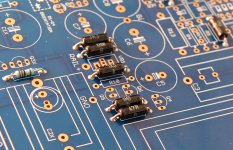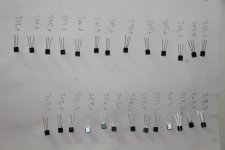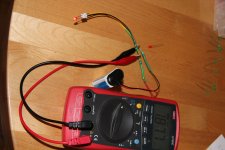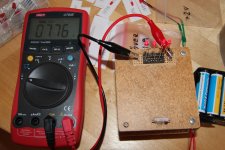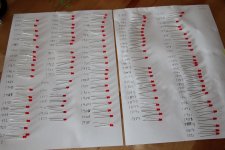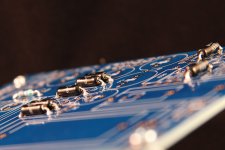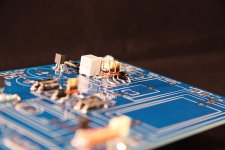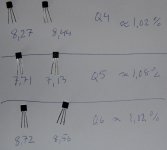Looking at the parts I got for my second build. A very nice kit indeed - thanks TB! .I believe I'll wait for the watercooling part to materialize before I start. As always keeping an eye on things.
Hope to find a quite period where I will change C3 from Obbligado gold+ to Mundorf SGIO's and replace the cooling blocks to standard from what I've been using. As I now have a probably)) reliant LCR meter I'll check the C2+C2Y combo and better it if needed. Of, course I would like to know if there are other findings amongs the builders that I could take with me in the review...
So far I'm very very pleased with the SQ as is my wife and the dogs. Really, as soon as I put our regular baroque vinyls on they just find their preferred spots and listen - ears up.
One can hear every instrument if you listen for it. It is there...
Regards
Oh, yes - forgot - this one has had the dl-103r as a goal all the time.
The next one will be for a special VdH-mc10 at 0,25mV. No - not 0.65mv - 0.25mV
Regards
So, what newthinking ideas does exist for the 369's? My experience is that keep them stable and with stable I mean stable over time which encompasses several hours per degree Celsius. I have found that sound vise these changes doesn't affect SQ. But of course - zero drift would keep my mind at peace as well.
Regards
Regards
Some population, K117 and LED picking. Is 1k in series with triplets and quartets and a 12(,5) V battery supply a valid configuration for picking the leds? I got 7,76 over the leds in this example and 4,74 over the 1 k resistor. 4,74 mA.
Attachments
Last edited:
Thanks Merlin.
I experimented a bit with load resistors and I got some slightly different voltage over the triplets and quartets depending how many milliamps it passes. LEDs usually do this. Does anybody know how much current each shall pass in the build so I know what to load with?
I experimented a bit with load resistors and I got some slightly different voltage over the triplets and quartets depending how many milliamps it passes. LEDs usually do this. Does anybody know how much current each shall pass in the build so I know what to load with?
Some population, K117 and LED picking. Is 1k in series with triplets and quartets and a 12(,5) V battery supply a valid configuration for picking the leds? I got 7,76 over the leds in this example and 4,74 over the 1 k resistor. 4,74 mA.
For picking the LEDs, first select your Q7, then rig it up as a ccs in series with 2 x 9v battery and the triplet in sockets like you showed. Then you can measure the Vf drop of the LED string in very similar conditions to the actual circuit.
It looks like R14 is also z-foil? What value is your R2?
I forgot that and edited my post
R2 is 68R and its a Welwyn sorry, not z-foil.
BTW RD/Link on raw psu board, what is that?
That's means dither a dropping resistors (if you need to lower the raw voltage a bit) or a link.
Glad I have someone to compare these with.
Your explanation is more elaborate, but I think we agree on some of the basics. For those that think they hear poly caps 'plastic' sound, then try these.
I have a .1uf Copper Jupiter/wax interstage to put into their next, but I am still trying to fully understand the sound before making changes. Right now, just a MKP1837 .1uf
I can give initial reports that the swap out to the copper jupiters was very impressive. The solidity in space and detail present seemed to jump substantially. Mid bass with drums was noticeable tighter as well symbols. Vocals seem to just flesh out more detail. The tone may have changed a bit. Although it did not seem to be describable. I found I had to turn down the bass in E-Xover and up the treble to present a little more on the higher end. I think it just emphasized a preference for presenting maybe too much mid bass in the covers current state.
Once can't mess around when comparing notes - so I used some nice recordings to listen to as a baseline.
Willie Nelson Red Headed Stanger on Impex.
Willie Nelson Stardust, silver MoFi version 33 RPM
Natalie Merchant Mofi 45RPM.
It makes me realize how much 'potential' the FSP has, given the right parts from needle on through.
BTW RD/Link on raw psu board, what is that?
Normally a jumper. Or a resistor if the transformer is too happy for final rectified DC value.
- Home
- Source & Line
- Analogue Source
- Simplistic NJFET RIAA
